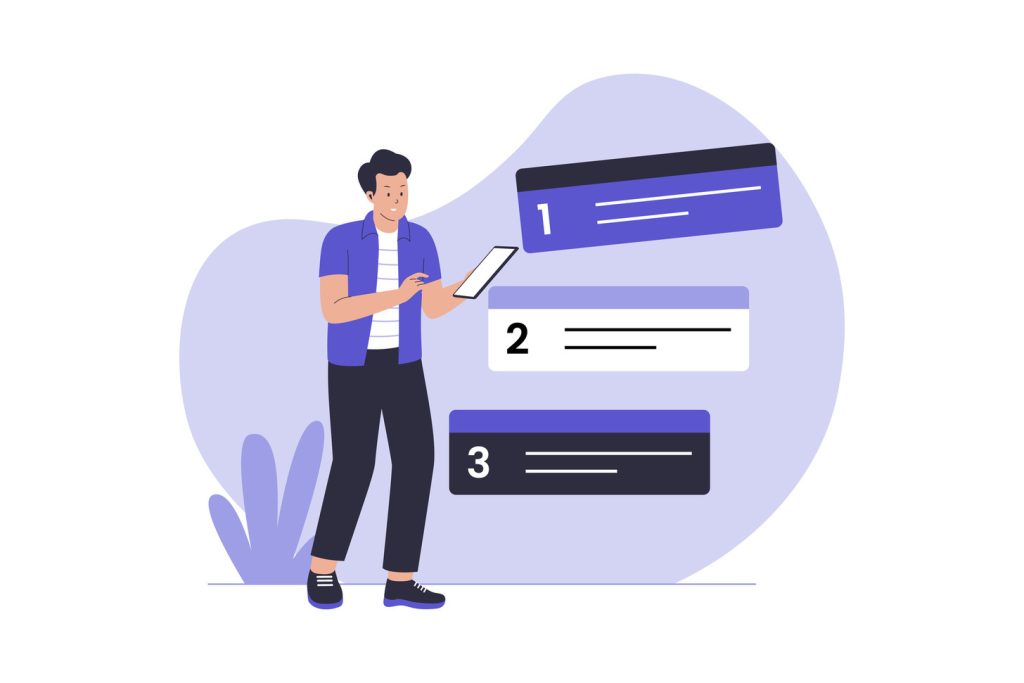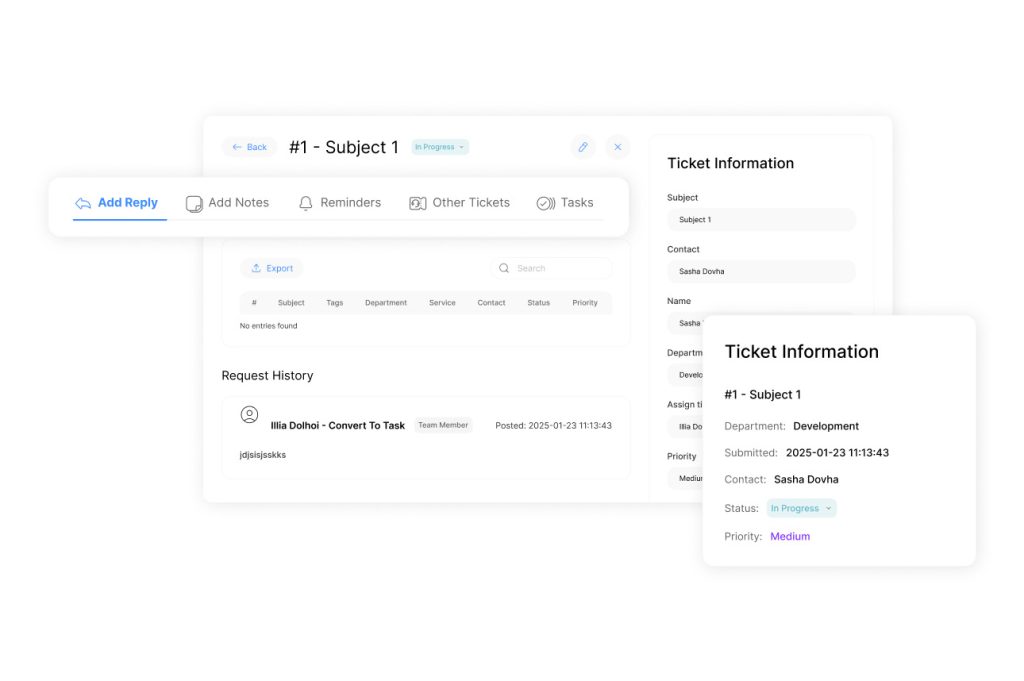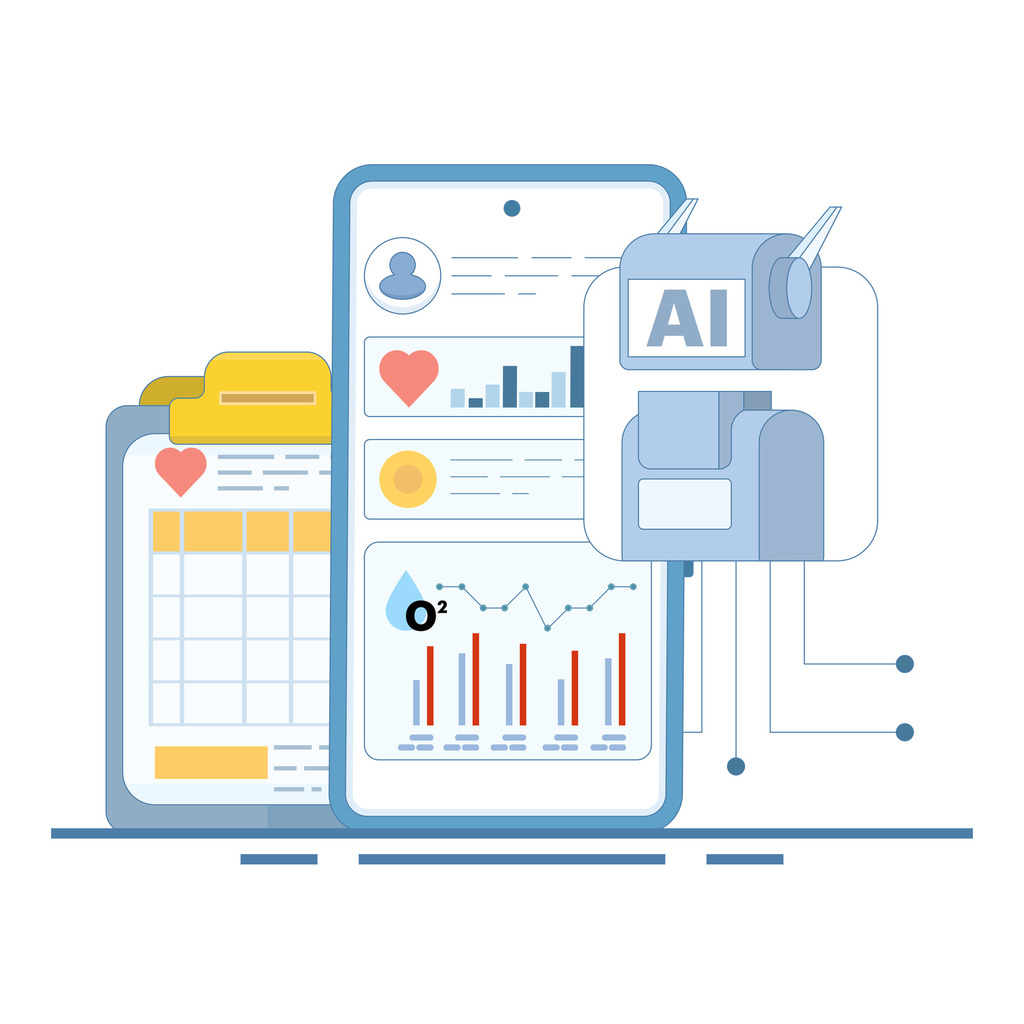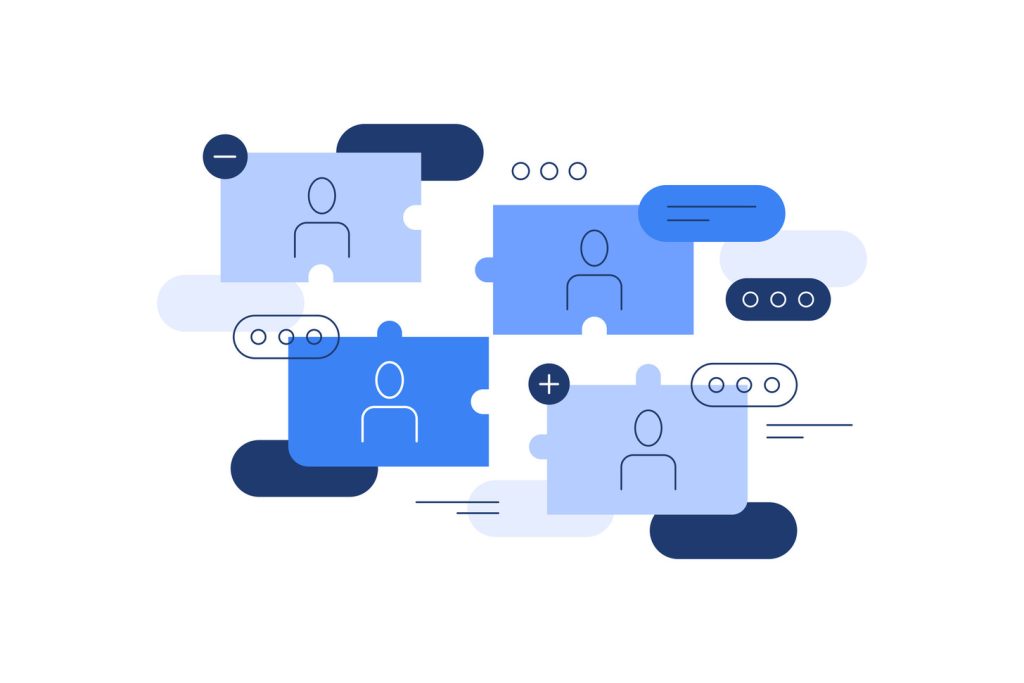Streamline Ticket Management: Ticket Categorization Best Practices

Modern businesses face growing demands to resolve customer issues quickly and effectively. Without a clear system for organizing requests, support teams struggle to prioritize tasks, track progress, or identify recurring problems. This inefficiency leads to delayed resolutions, frustrated clients, and missed opportunities for improvement.
A well-designed approach to grouping inquiries transforms how teams operate. By systematically sorting requests based on urgency, complexity, or department, organizations reduce bottlenecks and allocate resources effectively. Teams gain visibility into trends, enabling proactive adjustments to workflows and training programs.
High-volume operations particularly benefit from structured systems. When monthly inquiries reach thousands, manual sorting becomes impractical. Automated categorization tools paired with consistent protocols ensure swift routing, accurate reporting, and measurable service improvements. These strategies directly enhance response times while reducing agent burnout.
Forward-thinking companies treat inquiry organization as a strategic asset rather than an administrative task. It provides actionable data to refine product offerings, optimize staffing, and predict future needs. Businesses that master this process consistently outperform competitors in customer retention and operational agility.
Key Takeaways
- Enables prioritization of urgent issues and efficient resource allocation
- Simplifies trend analysis for proactive service improvements
- Reduces operational inefficiencies in high-volume environments
- Strengthens customer satisfaction through faster resolution times
- Provides data-driven insights for strategic decision-making
Introduction to Ticket Categorization in Modern Customer Support
Structured request management forms the backbone of exceptional client experiences. When businesses implement clear protocols for handling inquiries, they create frameworks that benefit both teams and customers. This approach transforms chaotic workflows into measurable processes that drive operational excellence.
Core Functions of Assistance Hubs
Modern help desks act as central nervous systems for client interactions. These platforms manage requests through unified interfaces, preserving complete histories of every conversation. By standardizing intake processes, organizations ensure no inquiry falls through cracks while maintaining service quality across channels.
Advanced systems now handle email, live chat, and social media messages within single dashboards. This consolidation eliminates silos that previously caused duplicated efforts and delayed responses. Teams gain real-time visibility into workloads, enabling smarter resource allocation.
From Basic Tools to Intelligent Platforms
Early customer service models relied on manual email tracking and spreadsheets. Today’s solutions integrate AI-driven routing, automated prioritization, and predictive analytics. Industry research indicates that companies using modern platforms resolve issues up to 40% faster than those using legacy systems.
This evolution reflects growing recognition that efficient support operations directly impact client retention. Businesses now treat inquiry management as strategic investments rather than cost centers. The shift enables proactive service improvements based on historical data and emerging patterns.
“Organizations excelling in request management see 35% higher customer satisfaction scores than industry averages.”
Forward-thinking teams leverage these advancements to personalize interactions while scaling operations. The result? Faster resolutions, reduced agent burnout, and measurable improvements in client loyalty metrics.
The Importance of Ticket Categorization for Customer Service and Help Desk Operations

Efficient support systems separate industry leaders from struggling operations. Strategic request organization directly impacts resolution speed, team performance, and long-term client relationships. Businesses that master this process gain measurable advantages in competitive markets.
Enhancing Response Times and Efficiency
Traditional first-come-first-served approaches often leave critical issues buried in queues. Intelligent routing systems prioritize urgent matters, automatically assigning them to specialized agents. This shift reduces resolution delays by 30-45% in documented cases.
Specialized routing also minimizes redundant work. Teams spend less time reassigning misdirected inquiries and more time solving problems. One logistics company reported 22% faster response rates after implementing priority-based workflows.
Improving Reporting and Data Insights
Structured request management turns raw data into strategic assets. Patterns in client concerns become visible, revealing opportunities for product enhancements and training programs. For example, recurring software bugs identified through categorized reports often lead to targeted updates.
Analytics-driven decision-making replaces guesswork in resource allocation. Support leaders track issue frequency across departments, adjusting staffing levels during peak demand periods. A SaaS provider reduced customer churn by 18% after aligning team schedules with emerging trend data.
“Teams using advanced categorization tools resolve 40% more inquiries per shift while maintaining 94% satisfaction ratings.”
These systems also streamline compliance reporting. Automated tagging ensures accurate records for audits and performance reviews, saving countless administrative hours annually.
Common Ticket Categories for Effective Support

Effective support systems thrive on clear classification frameworks that match client needs with team expertise. Organizations achieve faster resolutions by grouping inquiries based on urgency, complexity, and required skillsets. This strategic alignment reduces friction in service delivery while providing actionable insights for operational refinement.
General Customer Service Requests
Non-technical issues form the backbone of daily client interactions. These often involve billing discrepancies, shipping updates, or account modifications. Agents handling these matters rely on strong communication skills to clarify details and manage expectations efficiently.
Common examples include delayed deliveries or subscription changes. While less complex than technical cases, they require prompt attention to maintain trust. Teams often resolve 80% of these inquiries during initial contact when processes are streamlined.
Technical, Emergency, and Product-Related Matters
Specialized cases demand expertise in software, hardware, or system infrastructure. API errors and network outages fall here, requiring technicians with deep product knowledge. One enterprise software company found 62% of high-priority cases involved integration challenges with third-party tools.
Critical situations like server crashes or VIP escalations trigger immediate response protocols. These scenarios often involve cross-department coordination to minimize operational disruption. Product defect reports simultaneously feed quality improvement cycles, creating closed-loop feedback systems.
“Proper classification reduces average handling time by 33% while increasing first-contact resolution rates.”
Feature requests and change proposals bridge client feedback with development roadmaps. Though not urgent, they reveal market trends and user preferences that shape long-term strategy. Teams that master this balance see 28% higher client retention than industry benchmarks.
Strategies for Effective Ticket Categorization
Choosing the right method to manage inquiries determines whether support teams thrive or struggle. Organizations must balance human judgment with technological precision to handle varying workloads and complexity levels.
Manual Versus Automated Methods
Smaller teams often succeed with hands-on approaches. Generalist agents review each request individually, applying shared guidelines to sort inquiries. This method works when teams maintain tight communication and standardized definitions. One retail company reduced misrouted cases by 27% after implementing weekly category alignment sessions.
Larger operations require smarter tools. Automated systems use rules-based logic to direct requests instantly. Basic setups route emails to specific groups based on sender addresses or form selections. Advanced platforms analyze content contextually. Teams handling 500+ weekly inquiries often see 40% faster response rates after adopting these solutions.
Leveraging Triggers and AI Solutions
Keyword detection systems provide immediate improvements. Alerts for terms like “downtime” or “payment error” prioritize urgent matters automatically. These triggers ensure critical issues bypass queues, reaching specialists within minutes.
Machine learning takes accuracy further. AI tools study historical patterns to predict inquiry types, improving their sorting logic over time. A financial services firm achieved 92% auto-routing accuracy within six months of deploying such systems. CRM automation enhances this process by syncing customer data with support workflows.
“Hybrid models combining AI precision with human oversight resolve 15% more complex cases than fully automated systems.”
Mid-sized businesses often blend both approaches. Automated tools handle routine cases, while agents review ambiguous requests. This strategy maintains efficiency without sacrificing personalization – crucial for maintaining client trust during scaling phases.
Ticket Categorization Best Practices for a High-Performance Workflow

Establishing robust frameworks for organizing support inquiries drives operational excellence across departments. Strategic classification systems transform raw data into actionable intelligence, empowering teams to identify trends and allocate resources effectively.
Building Unified Classification Frameworks
Cross-department collaboration forms the foundation of successful systems. When product, operations, and client experience teams jointly define goals, they create taxonomies that serve broader organizational needs. Hierarchical structures outperform flat models by enabling precise analysis without excessive manual investigation.
Maintenance protocols ensure relevance as businesses evolve. Quarterly reviews adapt classifications to new features, market shifts, and emerging inquiry patterns. One SaaS provider reduced misclassified cases by 38% after implementing biannual taxonomy audits.
| Aspect | Hierarchical Taxonomy | Flat Taxonomy |
|---|---|---|
| Analysis Depth | Identifies root causes in 2-3 clicks | Requires manual data mining |
| Agent Efficiency | 92% accuracy with proper training | 75% accuracy average |
| Adaptability | Easy subcategory expansion | Complete restructuring needed |
Strategic Balance in Classification Design
Effective systems navigate between oversimplification and complexity. Organizations using 30-50 primary classifications achieve optimal results – sufficient detail for analysis without overwhelming staff. Clear naming conventions further enhance accuracy, reducing classification time by 25-40%.
“Teams maintaining 35-45 core classifications resolve 18% more inquiries weekly than those with extreme granularity.”
Intuitive integration into workflows minimizes cognitive strain. When classification becomes part of natural processes, agents maintain focus on resolution quality rather than administrative tasks. This approach boosts both productivity and data reliability for downstream reporting.
Aligning Ticket Categories with Your Internal Knowledge Base
Centralized information systems transform how support teams operate. When inquiry types sync with company knowledge hubs, agents resolve issues faster while maintaining service standards. This alignment creates self-reinforcing cycles where documentation improves resolutions, and resolved cases enhance the knowledge base.
Intelligent Integration for Rapid Information Retrieval
Platforms like Tettra bridge the gap between client inquiries and institutional knowledge. Their AI-driven systems automatically link incoming requests to relevant documentation. Agents receive suggested solutions before replying, cutting research time by 40% in documented cases.
Effective implementation requires matching help desk labels with knowledge base sections. Teams achieve this through:
- Mirrored taxonomy structures across platforms
- Automated content suggestions during case handling
- Cross-referenced tags for multi-department issues
Unified Labeling Protocols Across Systems
Consistent terminology prevents confusion in fast-paced environments. When CRM software, help desks, and internal wikis use identical tags, agents navigate between systems effortlessly. A telecom company reduced onboarding time by 33% after standardizing labels company-wide.
| Metric | Aligned Systems | Unaligned Systems |
|---|---|---|
| Average Resolution Time | 2.1 hours | 3.8 hours |
| New Agent Training Duration | 8 days | 14 days |
| Monthly Knowledge Updates | 47 revisions | 12 revisions |
| Cross-Platform Search Accuracy | 94% | 61% |
“Organizations with synchronized systems see 28% fewer escalations and 19% higher first-contact resolution rates.”
Regular audits maintain alignment as products evolve. Quarterly reviews ensure new features reflect in both inquiry types and knowledge articles. This proactive approach keeps teams prepared for emerging client needs while preserving institutional expertise.
Utilizing AI Solutions for Automated Ticket Categorization

Artificial intelligence reshapes how teams handle growing inquiry volumes while maintaining service quality. These systems analyze patterns humans might miss, transforming raw data into actionable workflows. Organizations adopting this technology see measurable improvements in efficiency and customer satisfaction.
Benefits of AI-Powered Ticket Assignment
Machine learning algorithms excel at identifying inquiry intent through contextual analysis. Unlike rule-based systems, they adapt to evolving communication styles and emerging issues. A retail company reduced escalations by 41% after implementing AI classification that detected seasonal product concerns early.
Consistency remains a key advantage. AI systems apply predefined rules uniformly, removing variations caused by human factors like fatigue or time constraints. This reliability ensures urgent matters always reach appropriate specialists without delay.
| Feature | AI Solutions | Manual Methods |
|---|---|---|
| Classification Accuracy | 94% after training | 72% average |
| New Issue Detection | Real-time alerts | Retrospective analysis |
| Scalability | Handles 10,000+ weekly | Max 500 weekly |
| Adaptation Speed | 24-48 hours | Quarterly updates |
Integration with existing platforms minimizes disruption. Teams maintain familiar interfaces while gaining intelligent sorting capabilities. One financial services firm reported 37% faster response times after connecting their CRM to AI classification tools.
“Businesses using AI-driven systems resolve 22% more inquiries per agent while maintaining 96% customer satisfaction ratings.”
These solutions also uncover operational insights. Patterns in misrouted cases reveal training gaps, while recurring themes highlight product improvement opportunities. Proactive organizations use this data to refine both client interactions and internal processes.
Implementing a Hierarchical Ticket Categorization System
Structured classification frameworks drive operational efficiency by revealing patterns in client interactions. Multi-layered systems transform surface-level data into strategic assets, enabling teams to address root causes rather than symptoms.
Balancing Scope and Detail
Broad classifications provide quick overviews of support trends. For example, grouping inquiries by product features helps identify underperforming areas. Granular subcategories then pinpoint specific pain points, like checkout errors in e-commerce platforms.
Effective hierarchies maintain agent productivity while delivering detailed insights. Teams at a SaaS company reduced analysis time by 52% after implementing three-tiered structures. Visual decision trees further streamline the process during peak hours.
| Factor | Hierarchical Model | Flat Model |
|---|---|---|
| Problem Diagnosis | Identifies root causes in 67% less time | Requires manual investigation |
| Training Efficiency | 3.2 days to proficiency | 6.8 days average |
| Reporting Depth | Tracks 14+ data dimensions | Limited to 5 dimensions |
“Organizations using layered classification systems resolve recurring customer issues 41% faster than those using single-tier models.”
Strategic alignment ensures these systems support business objectives. Marketing teams might track feature requests, while engineering focuses on technical errors. This approach turns support data into cross-departmental intelligence.
Regular reviews keep hierarchies relevant. Quarterly audits adapt classifications to new products and emerging client needs. Teams maintain operational agility without sacrificing data consistency.
Collaboration Between Teams to Refine Ticket Categories

Break down departmental silos to build classification systems that reflect real-world operational needs. Cross-functional alignment ensures inquiry types stay relevant as products evolve and customer expectations shift. Support teams working with product developers and marketing specialists create frameworks that serve both immediate resolutions and long-term strategy.
Regular feedback loops maintain system accuracy. Weekly syncs between frontline agents and data analysts identify mismatched labels or emerging inquiry patterns. One healthcare tech company reduced misrouted cases by 29% after implementing biweekly category review sessions across departments.
Shared success metrics drive continuous improvement. Teams tracking resolution rates alongside classification accuracy spot correlations between precise sorting and customer satisfaction. Operational dashboards displaying these connections motivate collaborative problem-solving during peak demand periods.
Quarterly cross-training programs deepen mutual understanding. When engineers shadow support calls and agents attend roadmap meetings, both groups gain insights that refine categorization logic. This knowledge exchange prevents system stagnation while fostering innovation in client service delivery.

